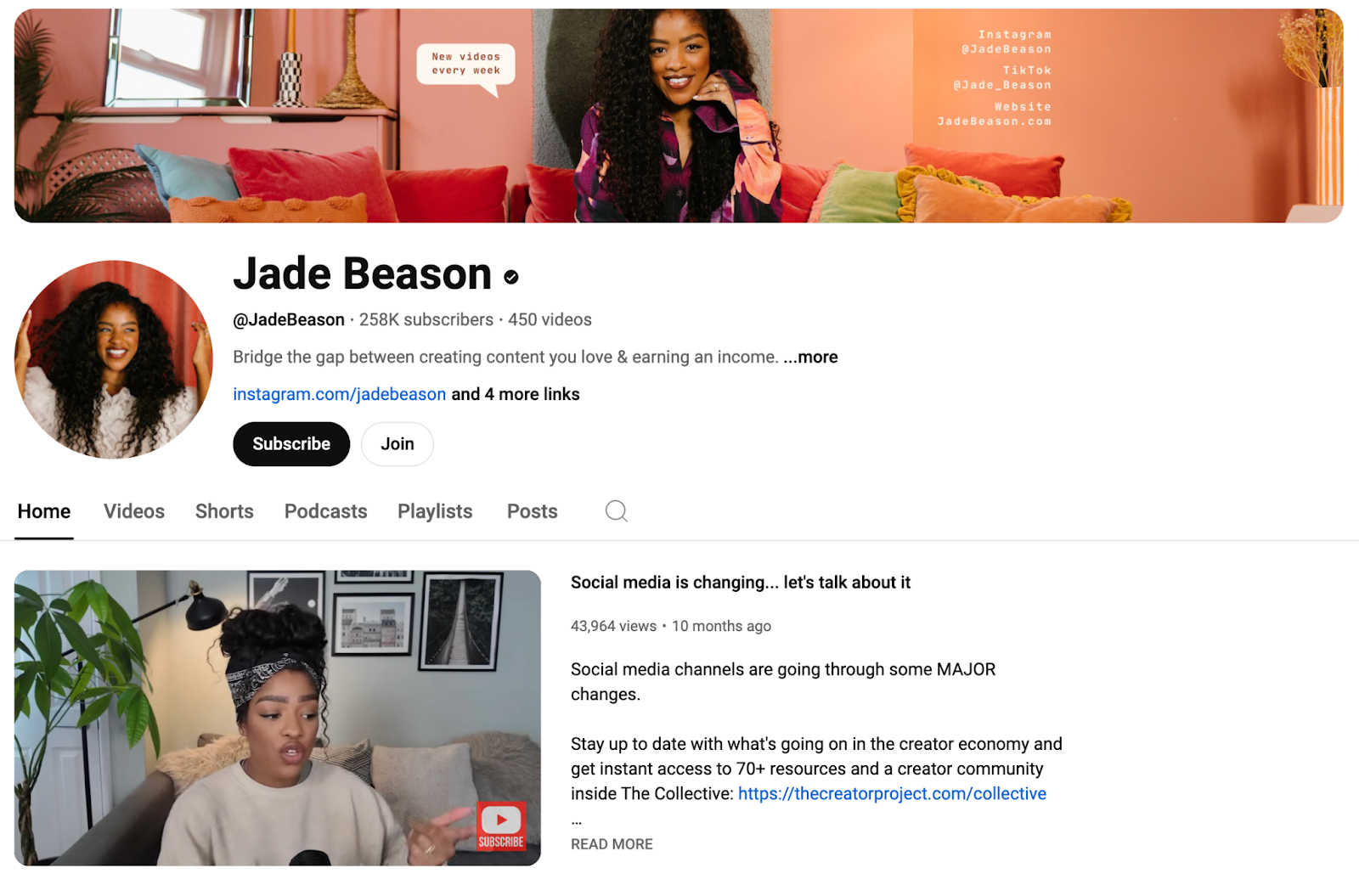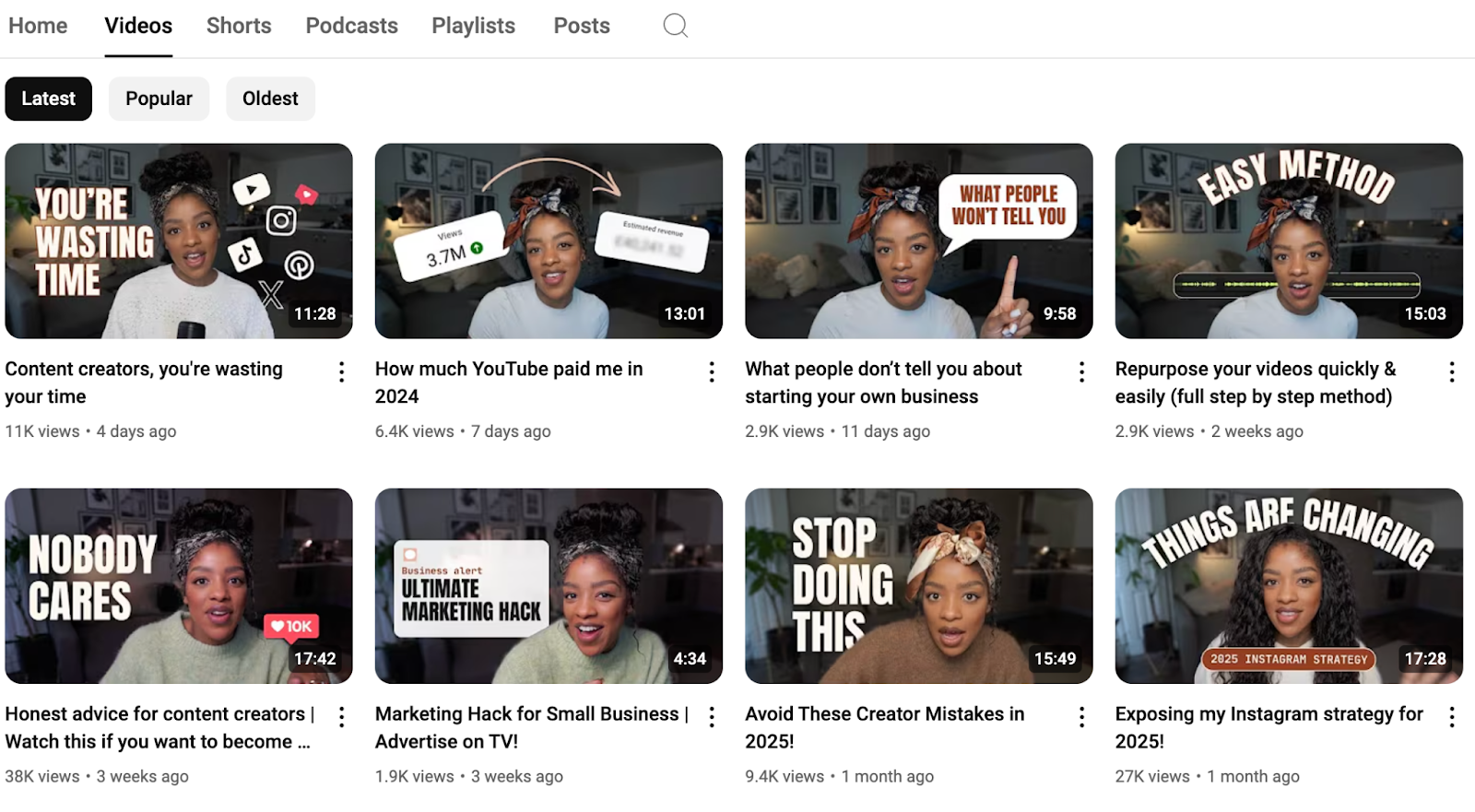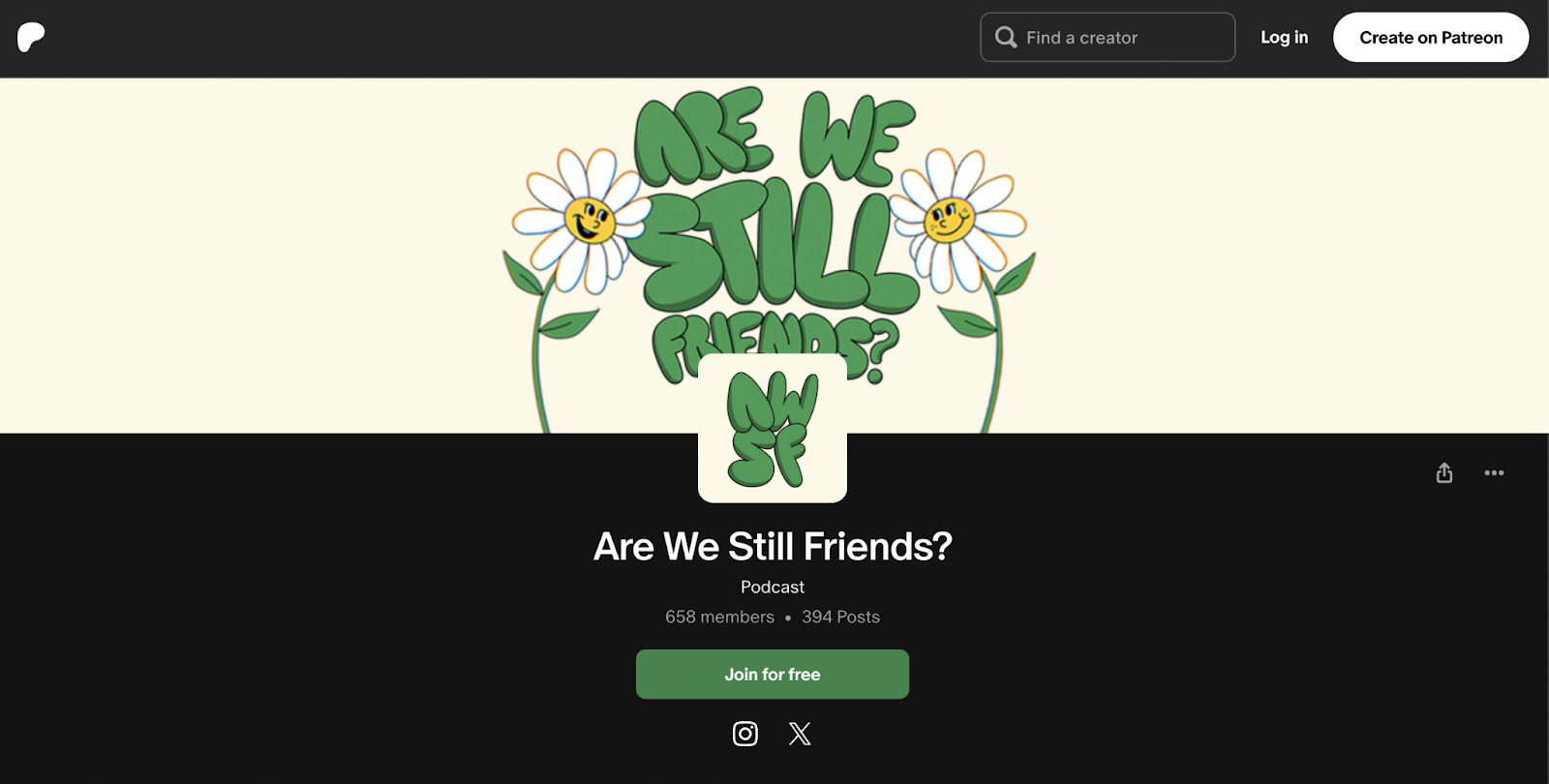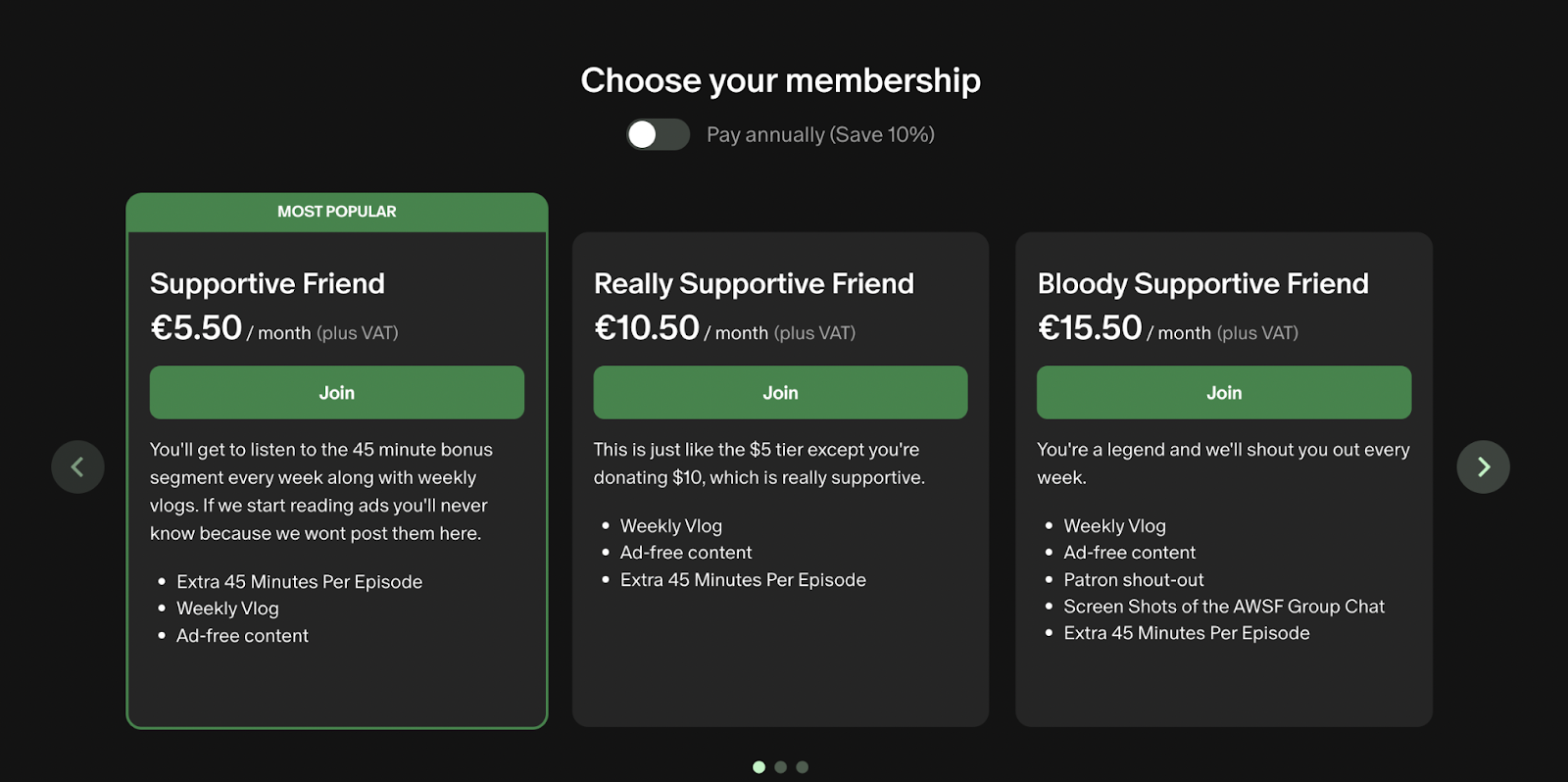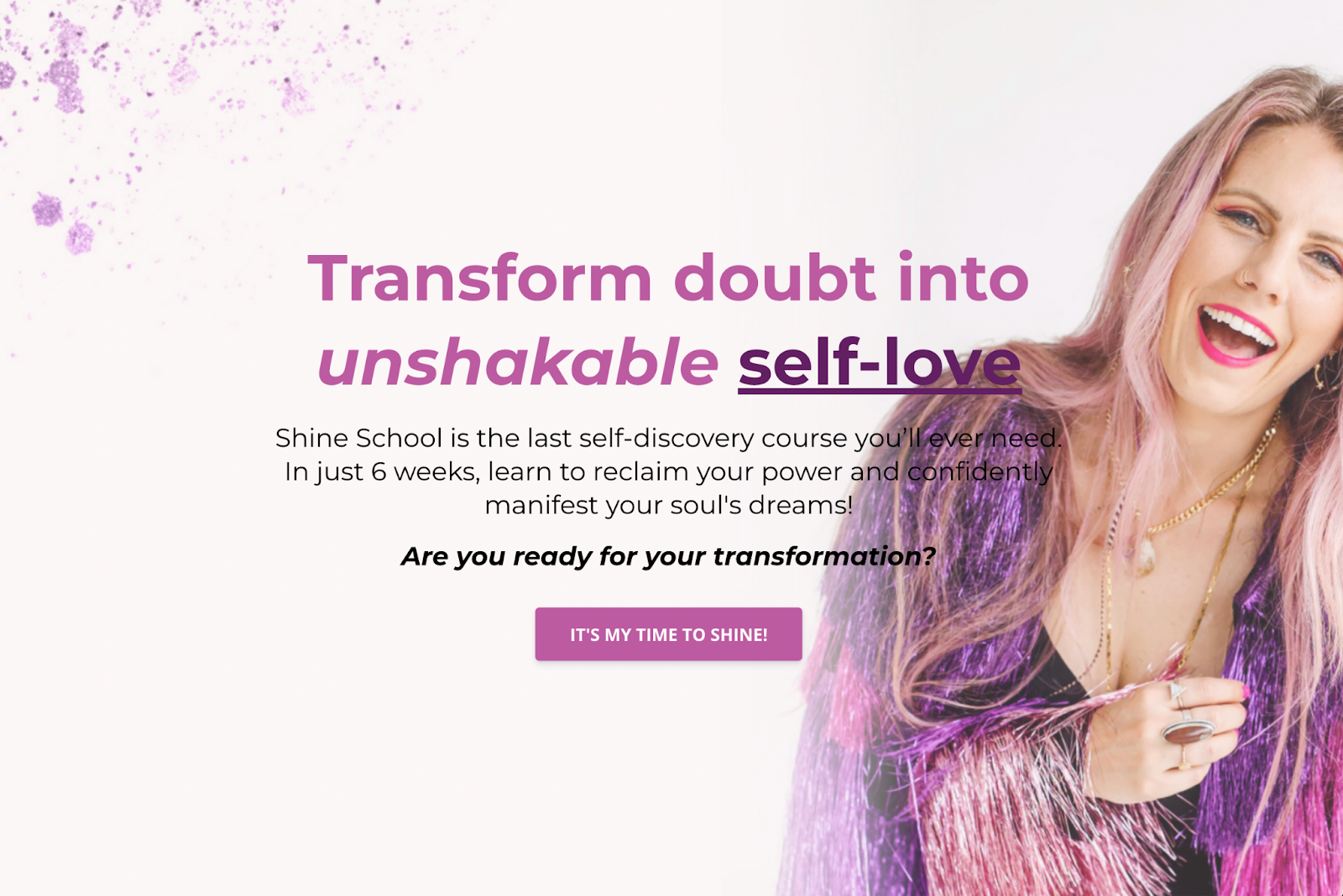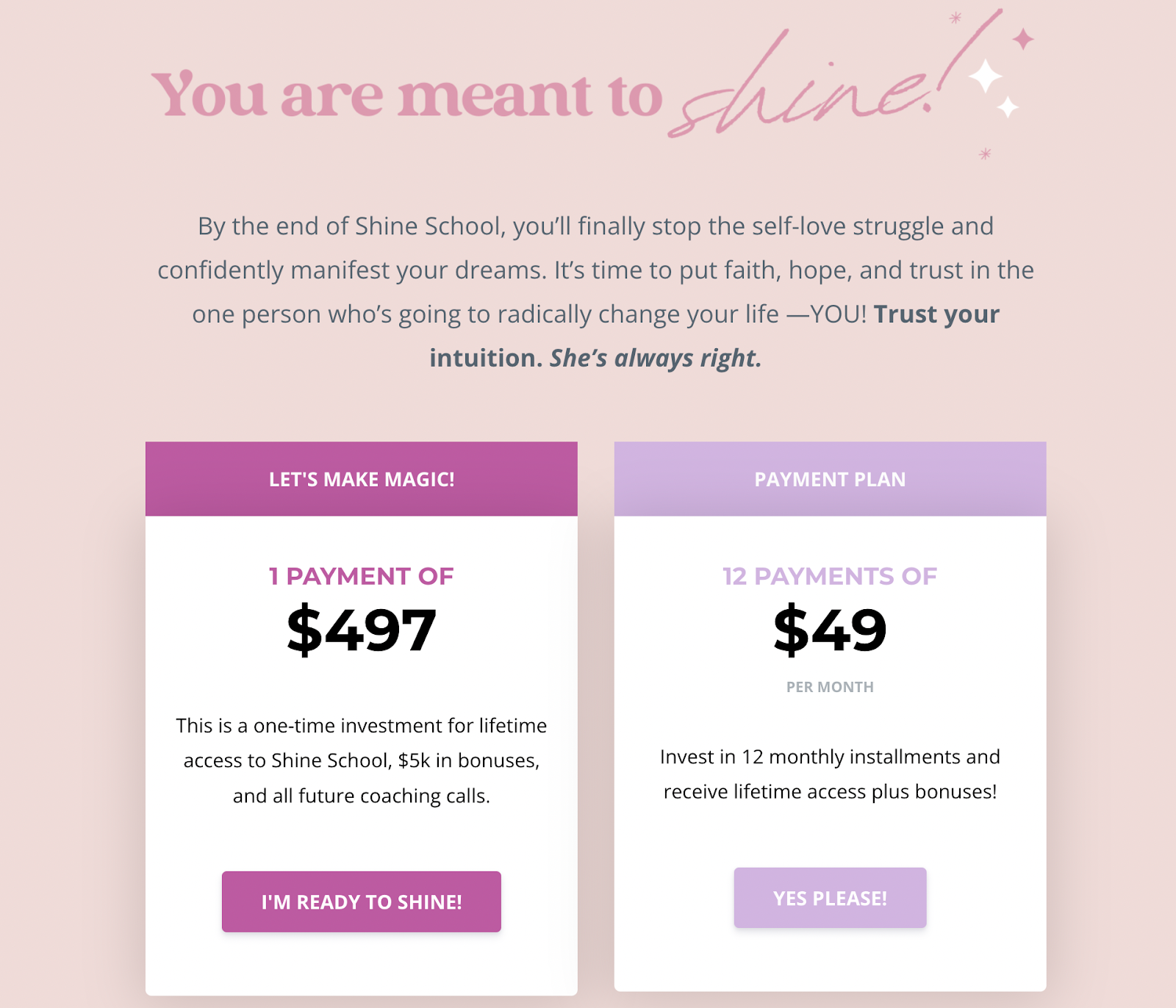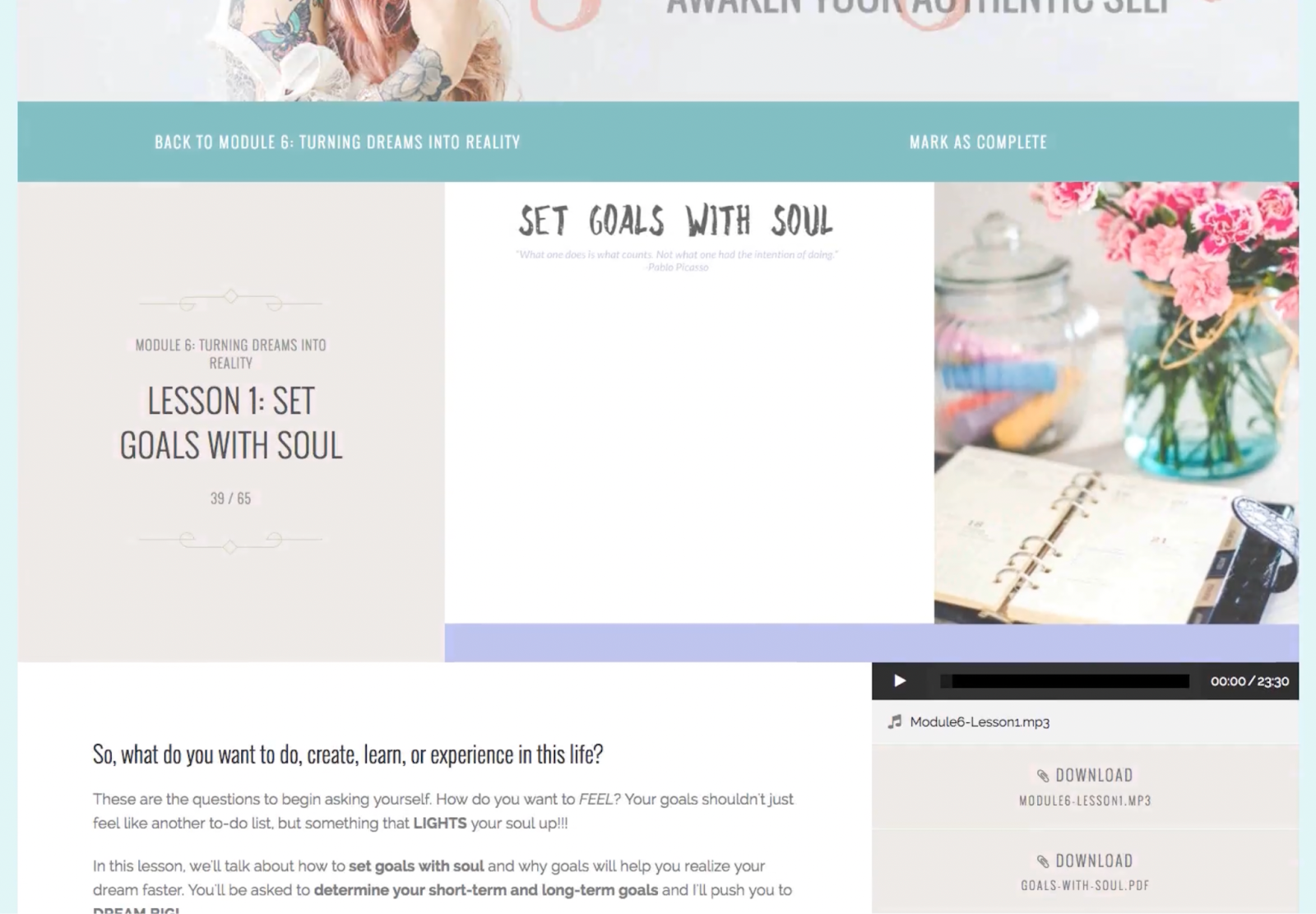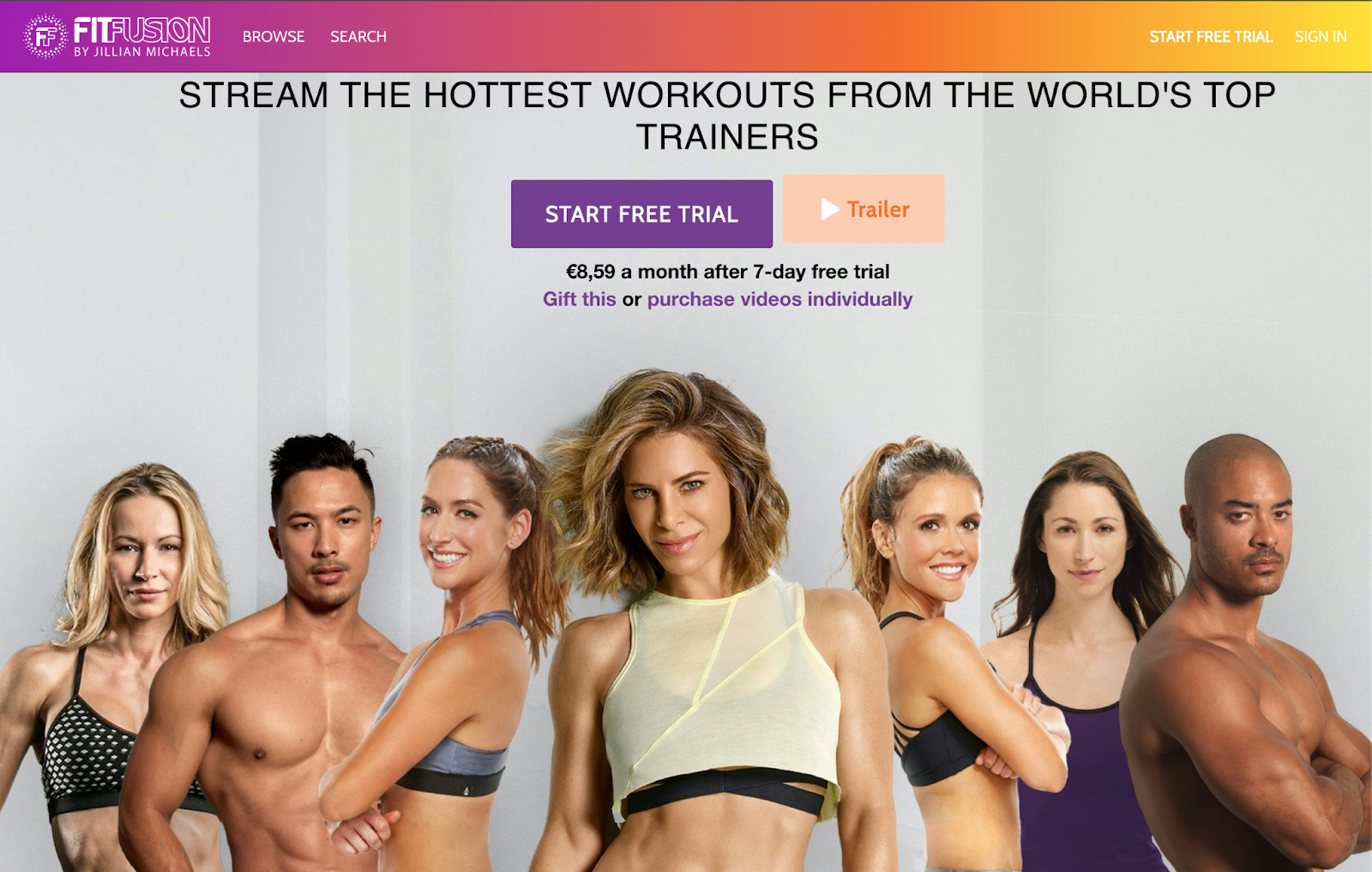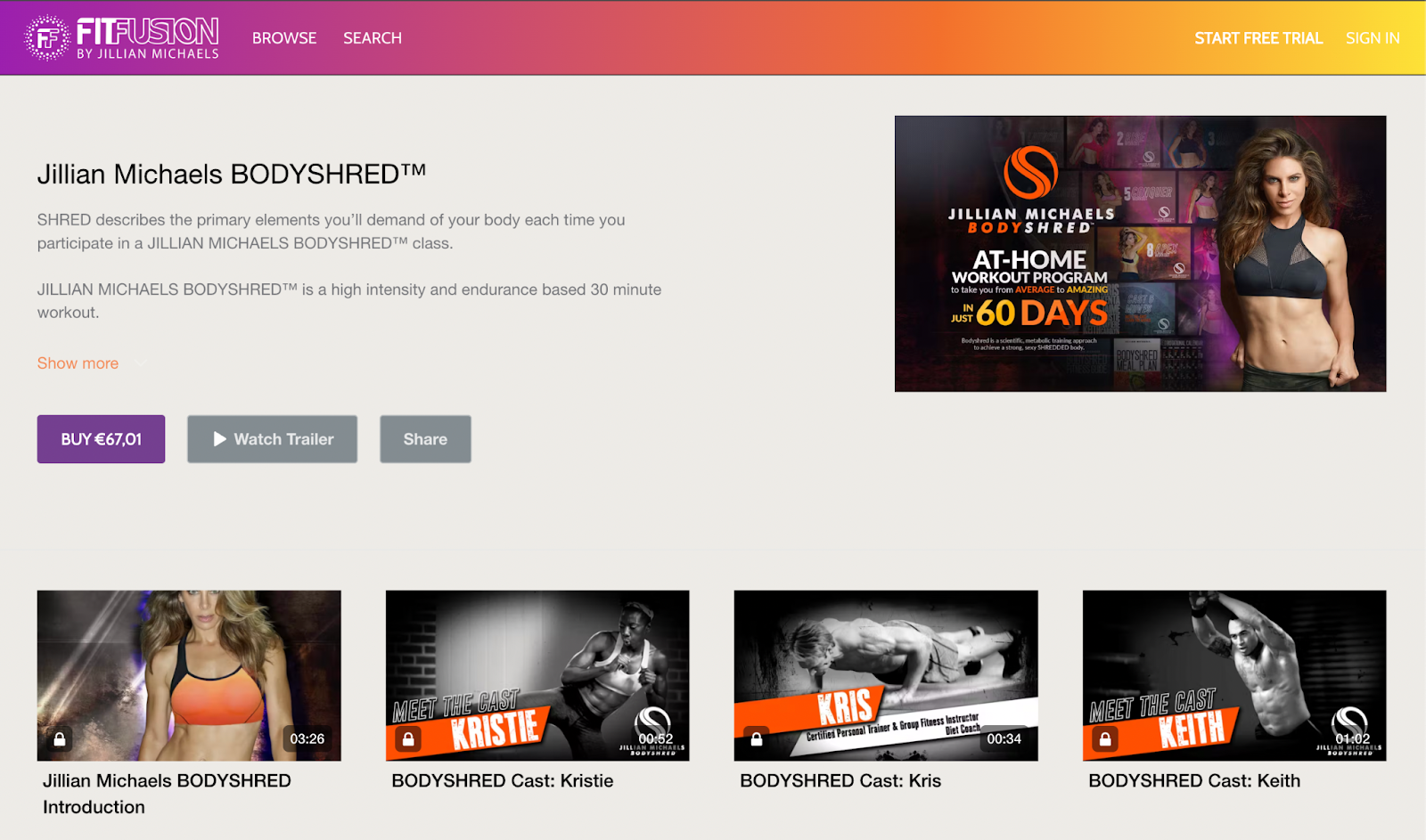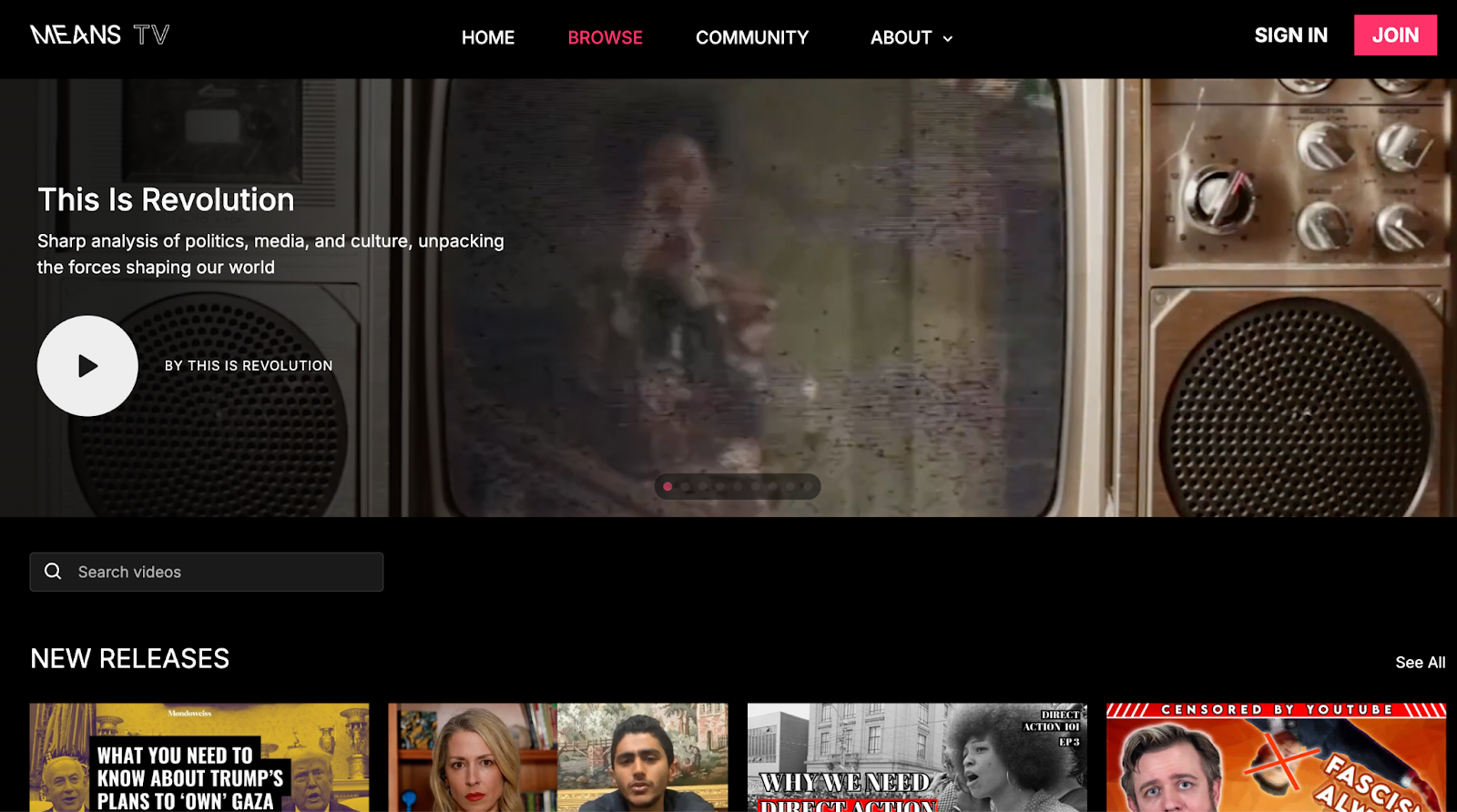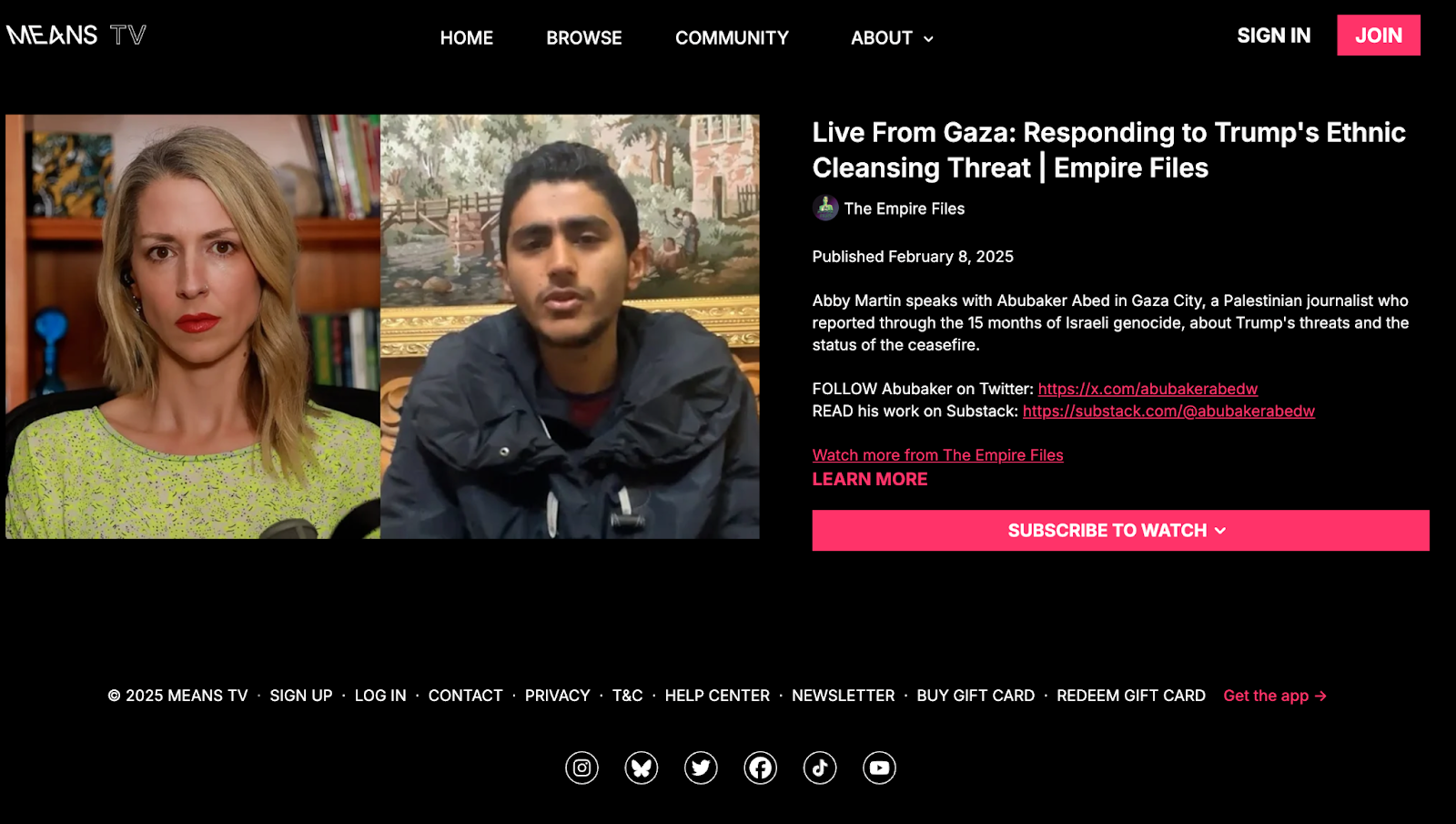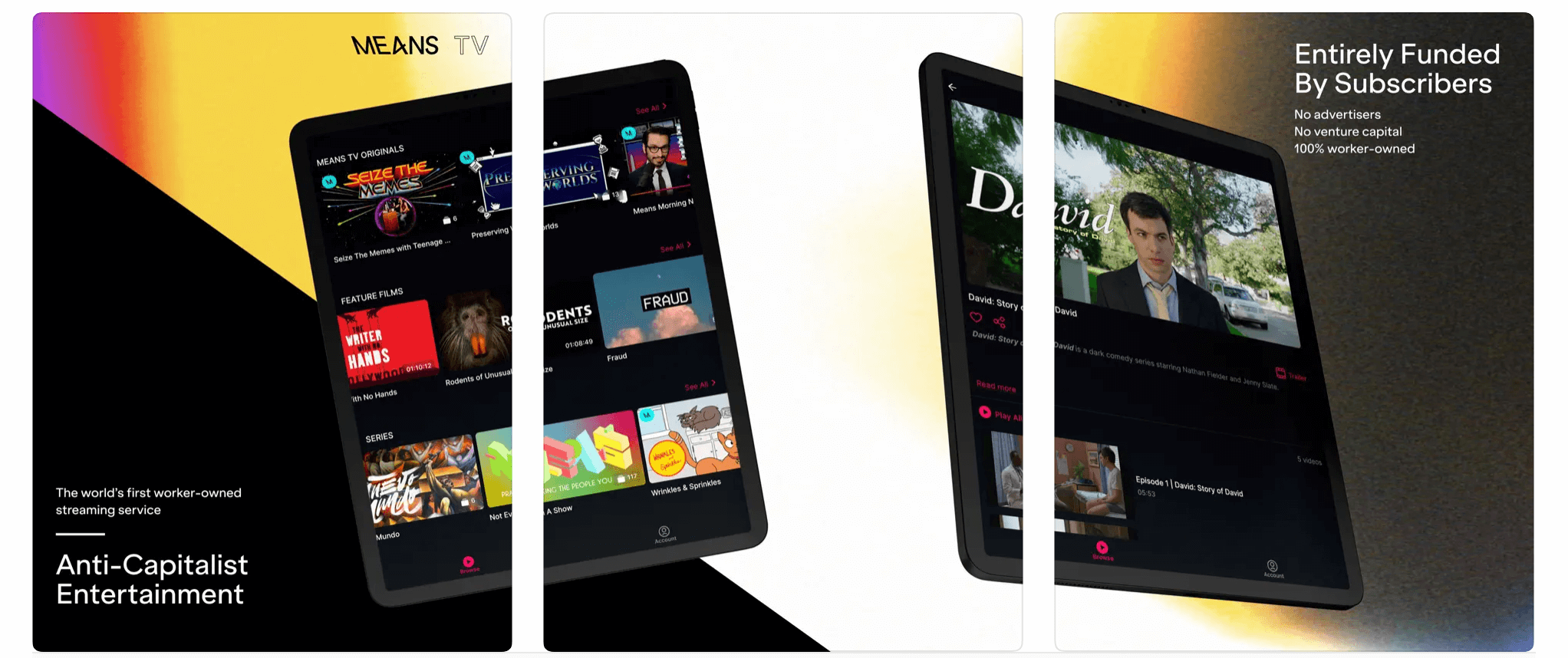When you’re trying to make money from your videos, the last thing you want is to lose out on revenue because your monetization platform is limiting you. You need a solution that works for you and your goals, whether you’re looking to earn through ads on major platforms, sell premium content directly to your audience, or build a full-scale video business.
We consulted real experts and honest reviews to pull together our video monetization platform top picks for creators at every level – from independent course creators to established media companies. There’s something in this article for everyone, whether you’re just starting to sell your first video series or scaling up to serve thousands of paying subscribers.
| Platform | Best for | Pricing |
| YouTube | Video monetization newbies | Free |
| Patreon | Fan funding | 5-12% of revenue |
| Kajabi | Online courses | From $71 per month |
| Vimeo OTT | Transactional video on demand | From $1 per subscriber + 10% of transactions |
| Uscreen | Video memberships | From $149 per month + $1.99 per subscriber |
How we chose these video monetization platforms
We believe in radical transparency, so let’s address this upfront:
Yes, we’re a video monetization platform ourselves, which might make you wonder about the objectivity of our recommendations.
That’s a fair concern!
Here’s our position: our mission is to help creators and their fans prosper through meaningful connection – and that doesn’t begin and end with our service. It’s woven into everything we do, including this guide, because your success is our success.
That’s why we’ve taken a methodical, evidence-based approach to our recommendations, drawing from:
- In-depth reviews from industry experts and trusted tech publications
- Direct interviews with creators who have used multiple platforms
- Survey data from creators about their platform experiences across different business types
- Our decade-plus of industry expertise working with successful creators
We don’t believe in generic “best to worst” rankings because each platform excels at something specific. Sometimes Uscreen will be the right fit, and sometimes it won’t be – we’ll be direct about that. Because proper user-product matches create thriving creators, and that’s what ultimately matters.
Okay, with that out of the way, let’s take a look at how to choose the best video monetization platform for you. Or, skip ahead to dive straight into our top picks!
How to choose the best video monetization platform for you
To earn stable revenue from your video content, you need one of two things: a constant flow of new customers, or a set of customers who pay you consistently. The latter is a lot easier, which is why so many creators are building recurring businesses. Whether they call it a club, a mastermind group, a subscription, etc. – they know that focusing on retention is a better route to sustainability.
Choosing the right video monetization platform comes down to understanding your business. Choosing any of the most popular video monetization platforms can be a good choice, but that doesn’t mean all of them will be the right fit for you.
Here are five questions to ask yourself when choosing from the video monetization platforms above:
- How do you want to monetize? If you like the idea of your greatest fans paying you for exclusive content, for example, Patreon is a good choice. If, on the other hand, you want to charge for individual courses, Kajabi might be a better fit.
- How experienced are you in video creation? As a beginner, YouTube is hard to beat because it lets you practice your creation and marketing skills for free. If you’re ready to get serious, though, Uscreen has lots of features that support video monetization on a higher level.
- Is your audience willing to pay for your content? Ad-supported platforms like YouTube are good for video creators whose audiences aren’t ready to pay to access video content, but more established OTT platforms like Vimeo will let you charge for access to your content.
- How much time can you commit to your video monetization business? If you need something fast, YouTube and Vimeo will get you started immediately, while more robust services like Kajabi and Uscreen require more time, but offer a lot more functionality.
- What resources do you have to invest? Video creators just getting started may be drawn to YouTube or Patreon, which don’t cost anything until you start earning. If you have some cash to invest, though, Kajabi or Uscreen will let you create a much higher-quality product to sell.
The 5 best video monetization platforms for selling video content online
Below, we’ll cover our top picks for the best video monetization platforms, for beginners just getting started, through to established video creators looking to level up their business. We’ll cover how you can maximize your earnings through recurring subscriptions, on-demand video content, pay-per-view, and which platforms offer the best revenue share model.
If you’re not sure which video monetization model is right for you just yet, we have you covered for that too!
YouTube: the best platform for video monetization beginners
Who is YouTube best for? Beginner video creators looking to start monetizing their videos for the first time through ad revenue and sponsorships .
What makes YouTube the best in its category? As we already know, YouTube is the go-to online video monetization platform for creators because it offers real earning potential with minimal risks,
Despite ad revenue fluctuations, algorithm changes, and ongoing content demonetization issues, many creators make significant income through Youtube AdSense, sponsorships, and memberships. Unlike selling products or launching a business—where mistakes can cost you real money—YouTube lets creators experiment, refine their content, and understand their audience without upfront investment. A failed video simply means less revenue, not financial loss, while a successful one can generate steady income.
This balance of high earning potential and low risk makes YouTube the ideal starting point for video monetization.
Does YouTube make it easy to switch to or from another platform? No, YouTube does not allow you to automatically migrate your existing audience and content to or from another platform. But frankly, you won’t need to. With a solid subscriber base, you’re ready to start building out a strong YouTube Marketing Funnel to whatever business you end up building in the future. And you can always continue generating passive revenue from you channel alongside your new business in the future.
The pros, according to real users:
- Free to use.
- Supports audience discovery and growth.
- Provides multiple monetization options (ads, memberships, sponsorships).
YouTube has by far been our most lucrative social media platform. Not only does AdSense pay more on long form videos than other social platforms do for video content, but brands pay a higher dollar for sponsoring long-form videos largely due to their reach and evergreen lifespan.
Chris and Sara, Verified YouTube User (Source)
The cons, according to real users:
- YouTube takes a significant revenue cut (about 45% of ad revenue).
- Changing algorithms mean your reach isn’t guaranteed.
- Content guidelines can lead to demonetization
The amount of money I earn from my YouTube channel is only partly down to me. Yes, I need to create valuable content and yes I need to share it on a regular basis and that is completely in my control, but the other side is down to YouTube’s algorithm. And whilst I can optimize my videos the best I possibly can, there is a huge amount that is not within my control there which means that my income can often be very inconsistent.
Jade Beason, Verified YouTube User (Source)
What does it look like to be a creator on YouTube?
Jade Beason is a creator and entrepreneur who specializes in educational content on YouTube. In 2024, Jade earned $49,000 in AdSense revenue alone. Considering her channel has amassed 250,000 subscribers and 450+ videos, it’s safe to say that Jade is far from a beginner creator, which is why AdSense is just one of her many revenue streams.
YouTube’s user base of over 2 billion monthly viewers is one of its biggest advantages and makes it one of the best monetization platforms to find and grow an audience. That’s exactly what Jade Beason has done.
However, one of YouTube’s biggest drawbacks is its unreliable built-in monetization program, AdSense. Not only does YouTube take 45% of the revenue your channel generates, but the platform’s unpredictable algorithm means earnings will fluctuate from video to video, week to week, and month to month. That’s why Jade uses YouTube for audience building and relies on her premium membership offering for more robust monetization.
While YouTube is a good platform for beginners, Jade Beason and countless other successful channels show that YouTube is a viable option for any experience level. Once you’ve used it to build an audience, though, you may want to look for an alternative monetization platform or add more revenue streams on top of AdSense. Both of these options will help you establish a more stable income as you step out of experimenting and start focusing more on building a sustainable business.
Patreon: the best platform for fan funding
G2 Rating: 4.1 / 5
Who is Patreon best for? Independent creators (artists, podcasters, YouTubers, etc.) who want to offer exclusive content to paying subscribers.
What makes Patreon the best in its category? Patreon allows creators to monetize directly through recurring fan donations (a form of monthly subscription). Patreon’s brand awareness among creators and audiences alike helps set expectations for audiences who want to support their favorite creator, relieving the pressure on the creator to treat it like a business. While it’s easy to set up and share, scaling is difficult, as Patreon primarily attracts superfans rather than casual viewers.
Does Patreon make it easy to switch to or from another platform? No. While you can export your audience list and encourage Patrons to sign up on another membership site, you cannot migrate their Patreon subscription history or payment details.
The pros, according to real users:
- Easy to get set up in minutes.
- You don’t pay platform fees until you start earning revenue through the platform.
- Direct, recurring revenue from fans managed by the platform.
Patreon treats its content creators very well I feel and the creators get to ask for donations to help them with creating more content and maintaining their channels on Patreon. I feel like Patreon puts content creators in the drivers seat when it comes to controlling what they choose to produce compared to other platforms which are not as friendly to content creators of which I won’t mention.
Lindsay H., Verified Patreon User (Source)
The cons, according to real users:
- Patreon takes 5–12% of earnings, plus payment processing fees.
- Monetization model built on donations is hard to scale and sustain.
- Limited native video hosting (you need YouTube or Vimeo integrations).
- Poor end-user experience.
The app’s organization is terrible for users who are trying to access posts that are anything other than the most recent. The only option is to scroll and scroll every time you want to see an older post (or listen to an older podcast episode), and I find that incredibly annoying.
Avery C., Verified Patreon User (Source)
What does it look like to be a creator on Patreon?
Are We Still Friends? is a video podcast that established an audience on YouTube and graduated to monetizing content through Patreon. With 27,000 subscribers on YouTube and 650+ patrons on Patreon, the AWSF podcast represents many small-to-medium-sized creators who find Patreon to be worth it, thanks to its ease of setup, low upfront cost, and low-maintenance nature.
More experienced creators who tend to earn more through their content monetization may want to seek out alternatives to Patreon that offer more features and scalability for a better price.
Patreon’s tiered support options mean fans of AWSF can get weekly ad-free podcast episodes, bonus segments, and shoutouts on the podcast, depending on their monthly payment tier.
Want to see how Uscreen compares to Patreon? We break it down on our Uscreen vs. Patreon page.
Kajabi: the best platform for online video courses
G2 Rating: 4.3 / 5
Who is Kajabi best for? Educators, coaches, and entrepreneurs selling structured video courses.
What makes Kajabi the best in its category? Kajabi is a premium online course platform, helping educators turn video content into structured learning experiences. It provides robust sales and marketing tools, but lacks advanced engagement features like in-depth community-building, which might raise the question of whether Kajabi is worth what it charges its users.
Does Kajabi make it easy to switch to or from another platform? Yes. Kajabi allows creators to migrate existing students and content to another platform without losing historical data.
The pros, according to real users:
- All-in-one course creation and monetization.
- Built-in email and marketing automation.
- Customizable website and branding.
Kajabi is phenomenal as a LMS (learning management system) for my courses. It’s simple to set up, there is minimal technical responsibility on our end (don’t have to worry about updates, plugin conflicts, server maintenance, etc), and the user experience is easy, intuitive, and effortless. The primary reason we adopted Kajabi was for the end user experience it created. After using WordPress based LMS for years, it freed up a lot of time and worry having all the backend tech handled.
Ashlie P., Verified Kajabi User (Source)
The cons, according to real users:
- Expensive (plans start at $149/month).
- Limited community engagement tools.
- Can be overwhelming for beginners.
Automation on Kajabi often failed—20% of the time. I got unhelpful replies like ‘Sorry, sometimes automations fail.’ It was frustrating because in their marketing campaigns, “powerful automations” seemed like a huge selling point, but on the backend, I could see not enough money was being spent towards improving the product’s functionality.
Liz Kohler Brown, Founder of The Studio Membership (Source)
Discover how Liz Kohler Brown drives $75k monthly after migrating from Kajabi to Uscreen.
What does it look like to be a creator on Kajabi?
Brittney Carmichael is a course creator and coach who founded Shine School, an online course hosted on Kajabi’s platform.
Shine School offers a six-week program that helps women tap into their authentic selves. Kajabi lets Carmichael release weekly videos, host coaching calls, include a wide range of downloadable resources, and offer multiple payment options.
The Shine School homepage is an example of something that Kajabi does very well – it’s essentially a sales page, with great design, lots of videos, social proof, pricing information, and more, all presented in a beautiful and easy-to-browse format.
Want to see how Uscreen compares to Kajabi? We break it down on our Uscreen vs. Kajabi page.
Vimeo OTT (now Vimeo Streaming): the best platform for transactional video (TVOD)
G2 Rating: 3.7 / 5
Who Vimeo OTT is best for: Media companies, filmmakers, and professionals selling pay-per-view or rental-based content.
Can you migrate your Vimeo subscribers to another platform? Yes, Vimeo OTT allows creators to migrate existing customers and video content to another platform.
What makes Vimeo OTT the best in its category? Vimeo’s over-the-top (OTT) service is a sleek, high-quality streaming solution designed for professionals who want to create their own branded Netflix-style platforms. However, it lacks discovery features, meaning you must bring your own audience. Brand recognition and high-quality video make it one of the best OTT platforms, but serious creators will quickly want more features than it provides.
Does Vimeo OTT make it easy to switch to or from another platform? Yes. Vimeo OTT allows creators to migrate existing customers and video content to another platform.
The pros, according to real users:
- Excellent video playback quality with no ads.
- Branded TV and mobile apps.
- Subscription-based and transactional monetization.
Vimeo OTT has a very user friendly interface on web as well as mobile app. It helps in seamlessly manage the video content across platforms and channels thus enabling a better control and achieve a wider reach.
Verified Vimeo OTT User (Source)
The cons, according to real users:
- Monthly fees can be expensive.
- No built-in audience (you handle marketing).
- Fewer engagement tools compared to all-in-one platform
- Unstructured video library
There was no way, with Vimeo, for there to be a community and for customers to engage—not only with me but with each other… My workouts were just a free-for-all. You opened the app and took a stab at one of the workouts, and if it worked for you, great, but there was no real guidance.
Macy Pruett, Founder of Fittest Core (Source)
See why Fittest Core switched from Vimeo OTT to Uscreen
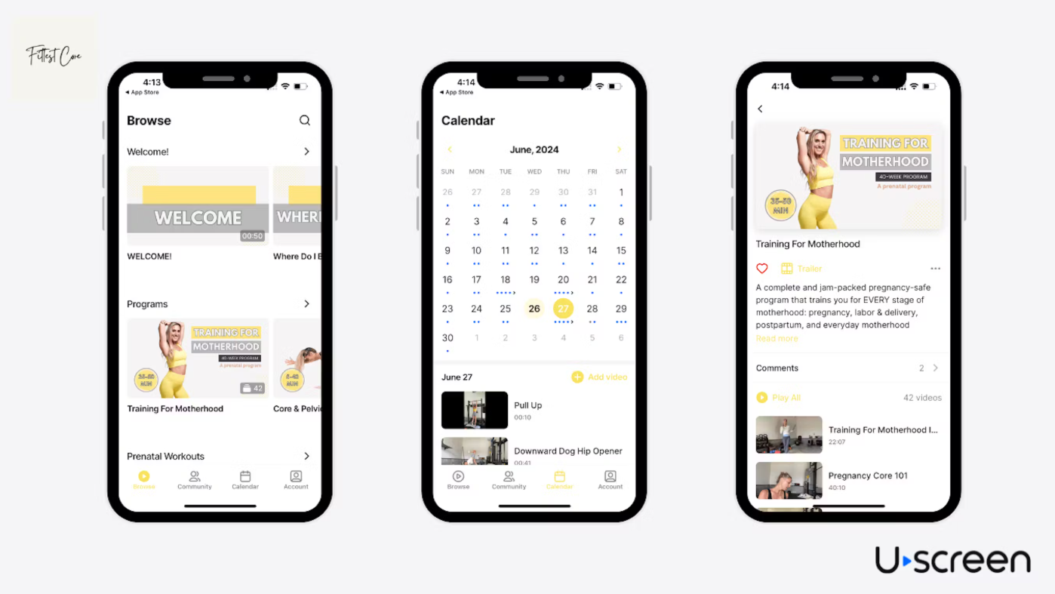
What does it look like to be a creator on Vimeo OTT?
FitFusion is a digital platform that uses Vimeo OTT to offer premium on-demand workout videos across a range of fitness techniques.
FitFusion sells individual videos and video collections for a one-time purchase, allowing customers to own their copies of this content with ongoing access – or they can opt for a monthly fee to access all of the content on the site.
Vimeo lets viewers browse videos by trainer, modality, target areas, and spotlighted or featured workouts, making content discovery easy.
688 video creators have moved from Vimeo OTT to Uscreen. Find out why in our Vimeo OTT vs Uscreen breakdown.
Uscreen: the best platform for video memberships
G2 Rating: 4.7 / 5
Who is Uscreen best for? Creators, educators, and businesses looking to build a video membership site with branded apps.
Can you migrate your Uscreen members to another platform? Yes, Uscreen allows full migration of content, subscribers, and payment history.
What makes Uscreen the best in its category? Uscreen is the best platform for creators who want to build a branded video membership business. It provides all the tools needed to launch, grow, and scale a video-based subscription model, making it ideal for long-term monetization.
Does Uscreen make it easy to switch to or from another platform? Yes. Uscreen allows full migration of content, subscribers, and payment history.
Patreon and YouTube memberships are actually positive indicators for us – they’re creating a pipeline of professionalizing creators. When creators outgrow the donation mentality and want to build real businesses, that’s where Uscreen shines. We’re not competing with these platforms; we’re the next step in a creator’s evolution.
The pros, according to real users:
- All-in-one video monetization (subscriptions, rentals, live streaming).
- Branded apps for mobile and TV.
- Built-in community and marketing tools.
- Recurring revenue model with higher earning potential.
It goes without saying that even the most thoughtful products are useless without a great team behind them. Uscreen has both a great product and a great team. It has become my go-to for all of my community and content distribution. The easy feature set make it possible to get set up quickly–even if this is your first time working with this kind of platform. Plus their staff is always there to help, even if you’re in the “trial mode” free plan.
Jeremy H., Verified Uscreen User (Source)
Check out our review page to see what our customers have said about Uscreen.
The cons, according to real users:
- Pricing starts at $149/month (not ideal for beginners).
- Requires marketing efforts to drive traffic.
- Some features have a learning curve.
By and large, learning any new platform–especially when you’re learning the concepts from the beginning–can be both daunting and frustrating. While Uscreen makes it super easy to learn their platform, you have to spend a decent amount of time hunting and pecking away at the interface to truly grasp what features are available to you and, especially if you’re evaluating against another platform, what’s not there. Aside from that, I don’t really have any substantive issues with Uscreen. I’m sure that if I were a more frequent or power user type, I’d be wanting some additional capability but, for me, it’s exactly what I need at the moment.
Jeremy H., Verified Uscreen User (Source)
What does it look like to be a creator on Uscreen?
Means TV is a worker-owned, ad-free entertainment service that streams daily news, original films, and TV shows. As a cooperatively run service, it has a strong focus on its anti-capitalist mission and bringing similarly minded viewers together in a community.
Means TV emphasizes community and reaching a wide audience through its mobile and TV apps (viewers can get Means TV through iPhone, Android, Apple TV, Roku, and FireTV apps, as well as online).
By using Uscreen tools like gift cards, promotions, and upselling, Means TV has grown to over $40,000 in monthly revenue.
Video monetization platforms: your quick decision summary
If you’re still not entirely sure which video monetization platform is for you, here’s some guidance that will help you in your journey:
Use YouTube if you want ad revenue and a low-risk playing field.
Use Patreon if you want direct fan support and community engagement.
Use Kajabi if your focus is on structured online courses.
Use Vimeo OTT if you want high-quality pay-per-view or subscription-based video sales.
Use Uscreen if you’re serious about building a video membership business with branded apps and recurring revenue.
Ready to take control of your video monetization? If a membership-based approach fits your goals, Uscreen can help you build a sustainable video business.
Watch our quick platform demo to see how Uscreen can help you monetize your videos and grow your audience.
These are all different ways of selling video content. AVOD is where you monetize through advertising, so you make money through advertisers and your audience watches your content for free. SVOD is the subscription model, where users pay a monthly or yearly fee for ongoing access to your video library. TVOD is offering one video or collection for sale as a one-off fee.
YouTube and Patreon are ideal platforms for beginners. You can get set up and build an audience without an upfront cost. Kajabi and Uscreen are both good choices for educators; Kajabi has built-in course features, while Uscreen offers a user-friendly Netflix-style library and built-in community. Patreon is well-suited to musicians as a space for their fans to support their work, and both Uscreen and Vimeo offer high-quality live streaming.
YouTube is free, and you earn through ad revenue and sponsorships. Patreon operates on a revenue share basis and takes 10% of what you earn. Vimeo is a combination of a revenue share of 10% and a $1 charge per subscriber, but you’ll need to contact their sales team for an accurate quote on pricing for Vimeo Streaming. Uscreen offers three pricing tiers, starting from $149 a month plus a $1.99 subscriber fee, and Kajabi offers 4 pricing plans starting from $89 per month.
No, only Uscreen, Kajabi and Vimeo Streaming offer analytics, paywall options and integrated payment processors. Patreon offers paywall options and in-platform payments. With YouTube you can launch a paid membership if you’re eligible and keep track of analytics through YouTube Studio.
You maintain ownership of your content on Uscreen, Kajabi and Vimeo Streaming and you can white-label them to create your own branded experience. With Patreon, while you do own your content, you don’t have ownership over your audience the way you would with a paid platform like Uscreen.
When your content is behind a paywall, discoverability comes from promoting and marketing your membership or streaming service. You can set up automated sales funnels, including emails, landing pages and links from your YouTube channel with Uscreen. There are also lots of helpful resources available to support creators in marketing their content and achieving success.
Yes, with Uscreen you can combine one-off donations with subscriptions. The platform is built for the subscription model, but donations can be enabled during live events or as a button on your website.
Uscreen specializes in OTT, and it is a user-friendly way to build your own branded video service. You also have the option of adding on branded TV apps so that users can easily stream your content on their TV screens.
Using a platform like Uscreen prevents the risk of demonetization because your members or subscribers are paying you directly. You’re also providing a better user experience where users can access all your content on demand without ads, with the option to provide your own apps. Uscreen is also highly praised for its excellent customer support. Check out our reviews page to see what our creators have said about us.


